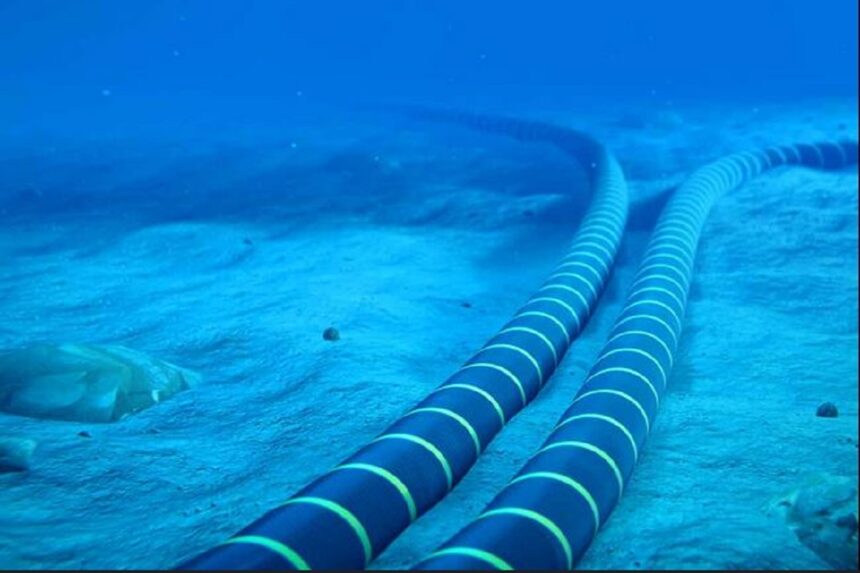Multiple Subsea Cables Severed in the Baltic Sea
Authorities in Finland are investigating a series of incidents involving the cutting of critical subsea cables in the Baltic Sea. These incidents, which took place on December 25, disrupted both power and Internet connectivity, raising concerns about infrastructure security and potential sabotage.
Estlink 2 Power Cable Severed
The Estlink 2 submarine cable, which transmits electricity between Finland and Estonia, was severed. With a capacity of 658 megawatts, this cable is a vital component of energy exchange between the two countries, ensuring stability and redundancy in their power grids.
Internet Cable Disruptions
In addition to the power cable, three Internet cables connecting Finland and Estonia were cut. Two of these cables are owned by Finnish telecom operator Elisa, while the third belongs to China’s Citic. A fourth fiber optic cable running between Finland and Germany, owned by Finnish group Cinia, is also suspected to have been damaged. These disruptions have the potential to impact communication services in the region.
The Finnish Transport and Communications Agency (Traficom) issued a statement addressing the situation: “Cable outages may cause delays in customers’ communication services. Traficom is currently investigating the impacts with the operators.”
Immediate Response from Finnish Authorities
Tactical Operations on the Eagle S Tanker
Finnish authorities quickly identified the Eagle S Panamax oil tanker as a suspect. The vessel, registered in the Cook Islands, was tracked crossing the Estlink 2 cable’s location at the time it was cut. The ship was en route from St. Petersburg, Russia, to Port Said, Egypt.
In a coordinated response, Finnish police, along with the Border Guard and Defense Forces, boarded the vessel. Helicopters facilitated access to the ship during the tactical operation. The investigation, led by the National Bureau of Investigation (NBI), is treating the case as aggravated criminal mischief. Additionally, Customs officials are examining potential regulation violations related to the tanker’s cargo.
Cable Repair Underway
Repair operations for the damaged cables are expected to begin by the end of the week, contingent on weather conditions. Traficom emphasized that Finland’s security of supply remains unaffected, stating, “Finland is well prepared for various disruptions in electricity transmission and telecommunications.”
Broader Context: A Pattern of Cable Attacks
This is not an isolated incident. Just a month earlier, a ship was suspected of deliberately dragging an anchor along the seabed for 111 miles, severing two other subsea cables in the Baltic Sea. Investigations into that incident are still underway.
More recently, a terrestrial Internet cable connecting Sweden and Finland was cut in two separate locations, further highlighting vulnerabilities in the region’s critical infrastructure.
Concerns Over the “Shadow Fleet”
Finnish Prime Minister Petteri Orpo has expressed concerns about the so-called “shadow fleet” operating in the Baltic Sea. He stated, “Our main task is to find effective means to stop the shadow fleet. The shadow fleet pumps money into Russia’s war fund so that Russia can continue to wage its war in Ukraine against the people of Ukraine, and it has to be stopped.”
Although no direct evidence currently links these incidents to Russian involvement, the recurring nature of such attacks has heightened suspicions.
Potential Impacts of Subsea Cable Cuts
Economic and Communication Challenges
The cutting of subsea cables can have significant repercussions for both economic and communication networks. Businesses relying on uninterrupted connectivity, such as financial institutions and e-commerce platforms, are particularly vulnerable. Power outages, although mitigated in this case, can also disrupt industrial and residential operations.
Security Risks
Subsea cables are critical yet vulnerable components of global infrastructure. Deliberate attacks on these cables underscore the importance of safeguarding them, especially in regions of geopolitical tension. Such incidents are often viewed as hybrid warfare tactics, targeting a nation’s stability without direct confrontation.
FAQ Section
What are subsea cables?
Subsea cables are fiber optic and power cables laid on the seabed to connect countries and continents. They carry vast amounts of data and electricity, making them essential for global connectivity and energy transmission.
How are damaged subsea cables repaired?
Specialized cable repair ships locate the damaged section, retrieve it from the seabed, and either splice or replace the affected portion. Repairs can take several days to weeks, depending on the extent of the damage and weather conditions.
What is the “shadow fleet”?
The “shadow fleet” refers to vessels involved in potentially illicit activities, such as evading sanctions or conducting unauthorized operations, which may include damaging critical infrastructure.
Why are subsea cables targeted?
Subsea cables are targeted because they are crucial for communication and energy transmission. Disrupting these cables can have widespread impacts on economies and national security, making them attractive targets in hybrid warfare and geopolitical conflicts.
How can subsea cables be protected?
Subsea cables can be safeguarded through improved surveillance, international cooperation, and advanced technologies such as underwater drones and sensors to detect potential threats.



















